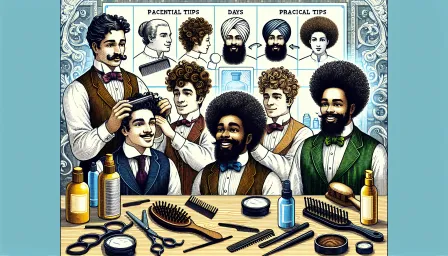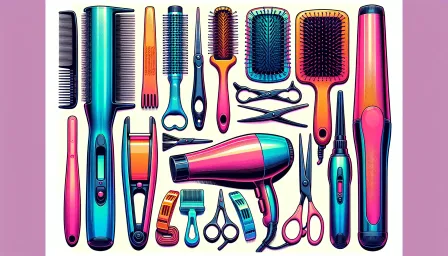Ultimate Guide to Hair Growth After Chemo: Tips and Timeline

Discover everything you need to know about hair growth after chemo. Learn tips, timeline expectations, and crucial care practices to assist your recovery.
Going through chemotherapy can be a daunting experience, and the side effects, particularly hair loss, can have a significant emotional impact. This comprehensive guide aims to provide valuable information on hair growth after chemo, including timeline expectations, practical tips, and essential care practices to support your recovery.
Understanding Hair Loss During Chemotherapy
Chemotherapy targets rapidly dividing cancer cells, but it also affects other quickly dividing cells, such as those in hair follicles. This often leads to hair thinning or complete hair loss. Understanding this process can help set realistic expectations and prepare you for the regrowth journey.
Timeline for Hair Growth After Chemo
Hair recovery varies from person to person; however, a general timeline can help you gauge the stages of regrowth.
First Few Weeks Post-Chemo
Within the first few weeks after completing chemotherapy, you may notice soft, fuzzy hair (known as "chemo curls") beginning to appear. This hair is often thinner and may have a different texture or color than your original hair.
2 to 3 Months Post-Chemo
By the second to third month, you should start to see more substantial hair growth. The hair will likely be around an inch long, and you may observe changes in texture or thickness compared to your pre-chemo hair.
6 Months Post-Chemo
At the six-month mark, many people find that their hair has grown several inches and may begin to regain its original texture and color. This period is crucial for maintaining proper hair care to encourage healthy growth.
1 Year and Beyond
After a year, your hair growth should be more consistent, with most people experiencing significant regrowth. Although individual results vary, this is generally the time when you can start styling your hair confidently.
Tips for Encouraging Healthy Hair Growth
While patience is key, several practices can promote healthier and stronger hair regrowth post-chemo.
Maintain a Balanced Diet
Eating a balanced diet rich in vitamins and minerals supports overall health and aids hair growth. Focus on foods high in protein, iron, zinc, and vitamins A, C, D, and E.
Gentle Hair Care Routine
Be gentle with your new hair. Use mild shampoos and conditioners, avoid excessive brushing, and let your hair air dry whenever possible to minimize damage.
Regular Scalp Massages
Scalp massages can improve blood circulation, encouraging hair follicles to produce stronger hair. Use natural oils like coconut or jojoba oil to massage your scalp a few times a week.
Avoid Heat and Chemical Treatments
During the initial regrowth phase, avoid using heat styling tools and chemical treatments, such as dyes and perms, that can damage delicate new hair.
Consider Hair Growth Supplements
Some people find that supplements containing biotin, folic acid, or omega-3 fatty acids can help support hair growth. Consult with your healthcare provider before starting any new supplement regimen.
Emotional Support and Self-Care
The emotional toll of hair loss and regrowth can be challenging. Engaging in supportive communities, whether online or in-person, and practicing self-care can help you navigate this period more comfortably.
Join Support Groups
Consider joining support groups where you can connect with others who have gone through similar experiences. Sharing stories and tips can be incredibly comforting and motivating.
Pamper Yourself
Treat yourself to activities that make you feel good, whether it's a spa day, a gentle yoga session, or simply spending time outdoors. Self-care enhances your emotional well-being, which can positively influence your physical health.
Conclusion
Hair growth after chemo is a gradual process that requires patience and care. While each person's journey is unique, understanding the general timeline and adopting recommended practices can significantly support healthy regrowth. Surround yourself with a supportive community, focus on maintaining good health, and embrace self-care as you navigate this path.



























